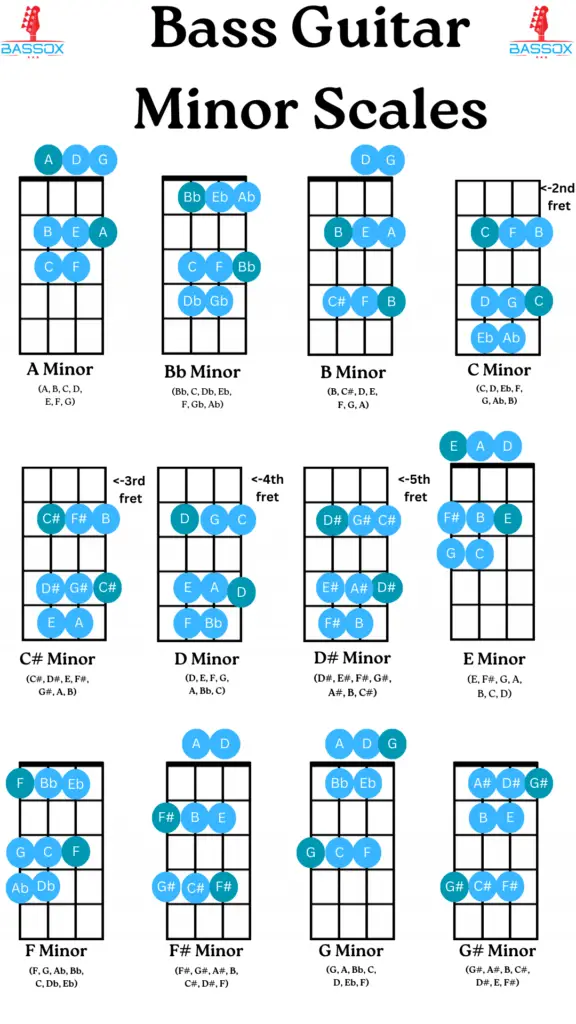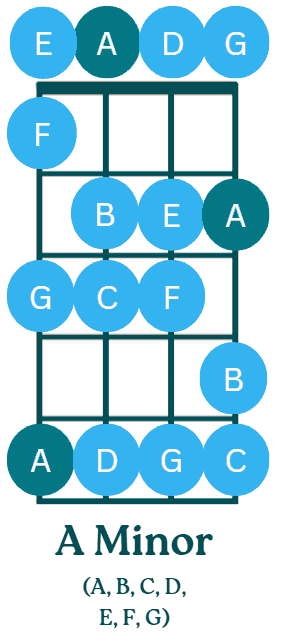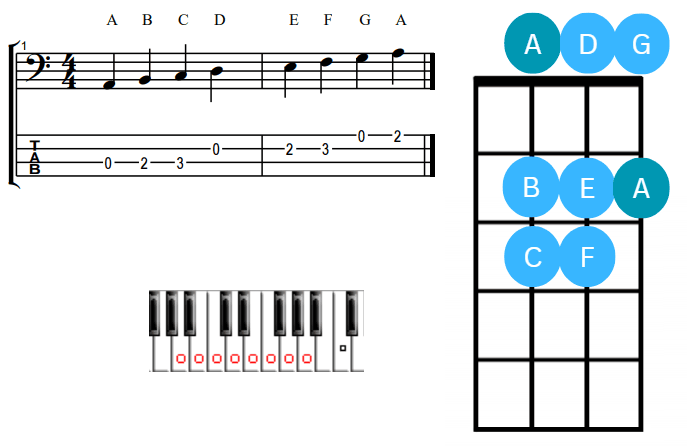The minor scale is easily the scale I`ve played the most on my bass. This is because, despite all the different scales and modes I`ve learned, I always gravitate back toward jamming in minor keys.
However, I remember it taking me a long time to fully grasp it. Therefore, I decided to make this understandable and beginner-friendly guide for learning the minor scale for all bass players.
We will start by learning two of the easiest minor bass scales: E and A minor. Then, I will show you how to build on that knowledge and how to play every single minor scale on the bass guitar.
Afterward, you will learn how to play the scales past the root note and octave. In other words, you will know how to play them anywhere on the fretboard and by starting on almost any note.
Lastly, I`ll show you some songs that are played in minor scales. I`ll also leave you with a step-by-step guide on how to practice and master the minor scale going forward.
Minor Scale Steps
Just like the major scale on the bass, the minor key is made up of half and whole steps. Steps mean how large the space between two notes of a scale is. Half-steps are right next to one another. Whole steps, on the other hand, have one fret in between them.
This makes more sense when looking at what the minor scale looks like when played on a single string of the bass. Here is an example of how to play the A minor scale on the bass:

This scale needs to consist of the following notes. A, B, C, D, E, F, and G. It also has to begin on the “A” note. Together, this is what makes this an A minor scale.
However, when playing other minor scales, the pattern of half and whole steps is still the same as in A minor. This is why learning this pattern of half and whole steps is so useful. helpful. If you know it, you also know how to play any minor scale.
To better see how this works, let’s look at what E minor looks like when played on a single bass string. The notes and the pitch of the scale are different, but the steps and the feel of the scale are the same:

You can apply this to any minor scale, and I`m going to show you how to do just that below. For an easy to use cheat-sheet of the steps of all minor scales, here is a table you can use to practice memorizing it.
| Scale degree | Steps up from the note below it | Interval to root note |
| 1 | N/A | N/A |
| 2 | Whole-Step | Major Second |
| 3 | Half-Step | Minor Second |
| 4 | Whole-Step | Perfect Fourth |
| 5 | Whole-Step | Perfect Fifth |
| 6 | Half-Step | Minor Sixth |
| 7 | Whole-Step | Minor Seventh |
| 8 | Whole-Step | Octave |
Infographic for every minor key
As I mentioned, the above pattern can be used to play every single minor key on the bass. For a better overview of how, I made this infographic. Feel free to save it, print it, or bookmark this page for easy access to it.

As opposed to playing them on a single string, the easiest way to play most of these is by using 3 or 4. You might also move up or down the neck to reach certain notes or in some cases entire scales.
In some cases, such as C and D minor this is a necessity. This is because the low C and low D can at their lowest be played at the 3rd and 5th frets of the A-string. In other cases, such as A and E minor, it is easier and more convenient to play them this way, rather than using 1 string like demonstrated earlier.
The above infographic shows how to play an octave of each key. In other words, these bass patterns show you how to play one full repetition of the scales; no more, no less.
However, the scales repeat themselves beyond the octave. Below the deep A of the A minor scale is a deeper G. Above the high A, there is yet a higher B that is part of the scale.
Some notes can also be played at different spots. For example, you can play a deep A1 on the open A string, or at the 5th fret of the E string.
To illustrate both of these points, here is where you can find ever note that is part of the A minor scale on the first 5 frets of the bass:

To begin with, I recommend practicing the patterns in the infographic above. As you get comfortable with them though, the next step is to get creative with finding new ways to play the scales, and extend them beyond the octaves.
Bass lines in minor keys
The most common minor key that songs are written in is A minor. This is because it is an easily accessible scale on bass, piano, and guitar.
The second deepest open string of the bass and the guitar is an A. This makes it easier to write riffs in A, as it feels natural to use the open string as the root note. This makes A minor scale an intuitive scale to write songs in both for bassists and guitarists.
On the piano, the A minor scale is the only minor scale that can be played with just the white keys. Similar to C Major, this makes it a beginner-friendly and common scale to write songs in.

With that said, you will still run into bass lines in all 12 minor keys.
You will also run into songs that cover a broad emotional spectrum. The minor key is often thought of as a sad-sounding scale, but this is only a half-truth.
It is true that sad songs are more often than not written in a minor key. Examples of this include Bill Withers` Ain’t No Sunshine. However, major scales can also sound sad, such as in Eric Clapton`s Tears in Heaven.
Furthermore, the minor scale can be used to sound heavy, such as on Iron Maiden`s Fear Of The Dark and Muse`s Hysteria. It can also work well in upbeat party songs like LMFAO`s Party Rock Anthem.
Lastly, for some examples of famous bass lines, here are 10 that are played in minor keys:
| Band | Bassist | Songs in minor keys |
| Pink Floyd | Roger Waters | Money (B Minor) |
| Queen | John Deacon | Another One Bites The Dust (E Minor) |
| Red Hot Chili Peppers | Flea | Californication (A Minor) |
| Nirvana | Krist Novoselic | Smells Like Teen Spirit (F Minor) |
| Iron Maiden | Steve Harris | Fear Of The Dark* (D Minor) |
| Bill Withers | Donald Dunn | Ain’t No Sunshine (A Minor) |
| Gorillaz | Murdoc Niccals* (*Virtual) | Feel Good Inc (Eb Minor) |
| Muse | Chris Wolstenholme | Hysteria *(A Minor) |
| Black Sabbath | Geezer Butler | N.I.B *(E Minor) |
| The Four Tops | James Jamerson | Bernadette* (Eb Minor) |
Conclusion
While learning the theory behind bass scales can seem intimidating at first, they are not all that difficult to master when approached the right way.
The aim of this article was to give you the tools needed to do just that. Going forward, I recommend applying what you have learned in this article in the following 5 steps:
- Pattern – Learn the half-step, whole-step pattern of the minor key. In my experience, picking out one single minor key to practice is the best way to do this.
- Octaves – Now use the pattern you have learned to play different minor scales. I recommend cycling through them, or picking a random minor key and seeing if you can play it on your own. The above infographic can be useful for double-checking if you got it right after giving this a try.
- Full scales – After learning how to play all the minor scales up and down, practice extending them beyond the root note and the octave. For this purpose, remember that the pattern of the minor scale always repeats itself past its starting and ending point.
- Covers – Use the list of minor songs above to find songs to cover or choose some of your own favorites. Either way, playing real bass lines will be the best way to see the potency of the minor scale in action.
- Composing – With the knowledge, technique, and experience in place, you can now write some bass lines of your own in minor keys. This will not only further develop your mastery of the scale, but greatly develop your skills as an overall musician and bass player.

